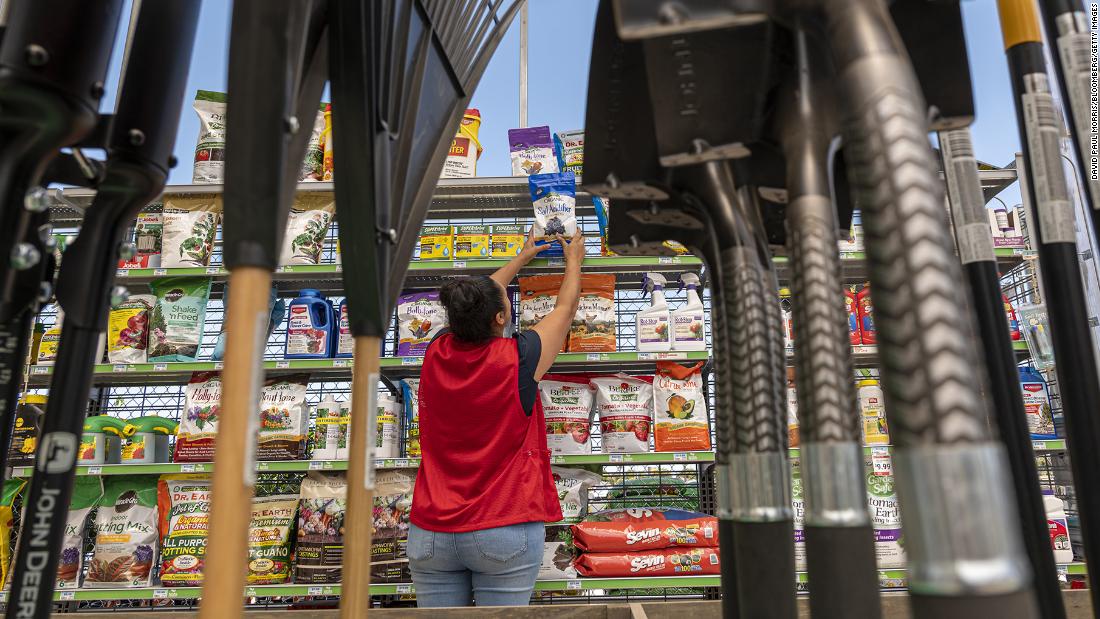
(CNN)At first glance, it looks like many Americans got big pay raises since the Covid-19 pandemic started.
But in reality, only workers in two industries -- leisure and hospitality and retail trade -- are actually coming out ahead, once inflation is taken into account.
Overall, wages and salaries for private industry workers rose by 4.2% between December 2019 and this past June, before rising prices are considered, according to an analysis of Employment Cost Index quarterly data by Jason Furman, an economics professor at Harvard University.
However, once inflation is factored in, paychecks actually shrank by 1.2% over that time period, the analysis found.
US consumer prices jumped by 9.1% year-over-year in June, the highest level in more than 40 years, according to the Bureau of Labor Statistics.
"Workers have had more bargaining power to get larger wages, but firms have also had power to set higher prices," said Furman, also a former chair of the Council of Economic Advisers in the Obama administration. "And the prices are beating the wages."
Where wages are rising
Leisure and hospitality workers, which includes waiters, cooks and hotel clerks, have been in high demand after being hit hard by job losses when nonessential businesses shuttered at the start of the pandemic. Their wages have grown by 0.9% since December 2019, after accounting for inflation, according to Furman's analysis.
While the overall economy has now regained all the jobs it lost during the pandemic, the leisure and hospitality sector is still 1.2 million positions, or 7.1 percent, below its February 2020 level, according to the Bureau of Labor Statistics' monthly jobs report, published Friday.
Retail workers, such as salespeople, cashiers and customer service representatives, have also been wooed by employers. This has led to a 0.2% inflation-adjusted bump in wages for them. Employment in this sector is 208,000 above its level in February 2020.
But even employees in these industries have seen their pay boosts erode this year as inflation continues to climb. Wage increases for leisure and hospitality workers and for retail employees had been 2% and 1.2%, respectively, over the two years ending December 2021.
Employers in lower-wage industries really had to boost pay in order to hire and maintain the staff needed to meet demand in 2021, said Skanda Amarnath, executive director of Employ America, which advocates for a high-wage, high-employment economy.
"Right now, CPI is just way too strong relative to everything else," he said of the Consumer Price Index, a popular inflation measure.
And where they are falling
In all other industries, inflation-adjusted wages have dropped since the end of 2019, led by utility workers with a 2.7% decline.
Those employed in construction and information technology have seen their pay slip by 1.8%, while manufacturing and financial sector workers have experienced a 1.7% drop.
Even wholesale trade workers, such as truck drivers, who have also been in demand during the pandemic as supply chains snarled, have lost ground. Their wages have declined 0.6% since December 2019. That's a reversal from the end of 2021, when their pay was up 0.1% over the prior two years.
The Employment Cost Index report is watched closely by the Federal Reserve to monitor the extent to which skyrocketing inflation is boosting wages. The data helps the Fed determine how much to hike interest rates.
But the Fed looks at wage growth before the impact of inflation, and that has remained strong. The 5.3% jump over the year ending in June was the highest since the spring of 1983.
So despite the decline in inflation-adjusted wages in most industries, the Fed is expected to continue raising interest rates this year to try to slow the rise in prices, economists say.
Workers in these two industries are the only ones coming out ahead right now - CNN
Read More
No comments:
Post a Comment